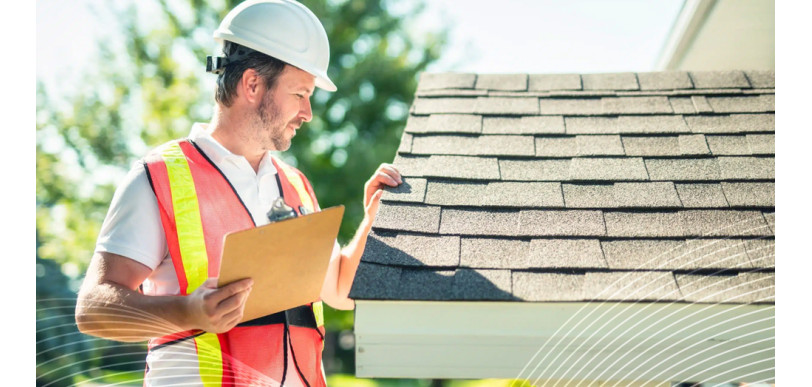How to Spot Roof Damage Before It Becomes a Bigger Problem
Roof damage isn't solely a consequence of aging materials. Factors such as severe weather events, prolonged sun exposure, subpar installation, pest infestations, and falling debris can all compromise a roof's integrity over time. For roofing professionals, early detection of these issues is crucial. Identifying and addressing problems promptly can prevent extensive damage, save clients significant repair costs, and avoid the need for insurance claims.
Tools like RoofScope reports and ProData property insight data empower contractors to conduct thorough inspections, providing detailed insights that facilitate proactive maintenance and informed decision-making. By leveraging these resources, professionals can enhance service quality, build trust with clients, and contribute to the longevity and safety of residential and commercial properties.
This comprehensive checklist is designed to guide professionals through a standard roof inspection, enabling early detection of issues, proper documentation, and the creation of faster, more accurate quotes. It is an essential tool to enhance service quality and client satisfaction.
1. Walk the Perimeter Before Anything Else
- Start with a full walkaround of the property—stay on the ground at first.
- Look for any part of the roof system that may have fallen from the roof that you may find on the ground.
- Take photos of any visible damage to help with documentation and reporting.
- Inspect the fascia boards and soffit for any water stains or signs of rotting wood.
- Skip the guesswork—use a RoofScope aerial roof report to gather precise roof dimensions and identify key roof elements for an accurate quote.
2. Inspect Interior Areas for Warning Signs
- Ask the homeowner if they've noticed any stains or leaks inside.
- Look for yellow spots, peeling paint, sagging drywall, or musty odors.
- In the attic, inspect insulation and structural wood for dampness, mold, or mildew.
- Ensure proper attic ventilation—poor airflow can lead to heat/moisture issues. Use this opportunity to set yourself apart and potentially upgrade the ventilation system to help the owner save energy and money for years to come.
3. Examine Roofing Materials & Fasteners
- Check for missing, curling, or cracked shingles; rust or corrosion on metal panels.
- Look for granule loss, especially in gutters, or blistering and warping caused by moisture.
- Inspect fasteners such as nails, screws, and clips to ensure they're intact, rust-free, and sealed with proper sealant.
4. Inspect Flashing, Seals & Roof Penetrations
- Focus on vulnerable points, such as chimneys, vents, skylights, and satellite mounts.
- Check that flashing and seals are secure with no cracks, rust, or lifted seams.
- Look for gaps or deteriorating caulking where materials meet or penetrate the roof.
5. Check the Gutters, Drainage, and Roof Valleys
- Examine areas with fascia damage to ensure the presence of properly installed drip edge flashing, which directs water into the gutter system and prevents moisture intrusion behind the fascia.
- Ensure brackets are secure and gutters free from rust, dents, and sagging.
- Inspect downspouts to confirm proper drainage away from the foundation.
- Ensure valleys are free and clear from debris and that there are no signs of potential damage.
6. Document Damage for Accurate Reporting
- Take both wide and close-up photos of any issues, especially those related to structure or moisture.
- Note the location, time, and any external factors that could be relevant for insurance or repairs. This information can be found on your ProData property insight report that is delivered with your RoofScope report.
- Standardized inspection reports and documentation will make insurance claims go smoother, and when preparing firm quotes, you will close more business.
7. Use Aerial Roof Measurements and ProData Insights
- Save time and increase accuracy with RoofScope's 99% accurate CAD-certified measurement reports.
- Avoid overordering materials by getting precise roof dimensions instantly.
- Access ProData Reports for historical storm activity, property characteristics, and last pulled roofing permit—ideal for insurance adjusters and estimating teams.
- Plug your data into ProDocs to create fast, branded, ready-to-send quotes.
Pro Tip: Speed Up Quotes with RoofScope ProDocs
Roof damage can't wait. ProDocs helps you turn RoofScope data into fast, professional quotes—no delay.
- Ensure accurate material orders to minimize waste and maximize your profit margins on every job.
- Send out polished, branded documents in a fraction of the time.
Elevate Your Inspections with RoofScope Reports and ProData to Close More Deals
Roof damage comes in many forms, but with RoofScope, you'll always be prepared. Our tools help roofers, contractors, and adjusters get eyes on the problem fast and move forward with confidence.
Try RoofScope for free and see how our aerial reports, ProData Sheets, and ProDocs platform help you bid smarter and win more jobs.
written by RoofScope published on 04. 16. 2025

